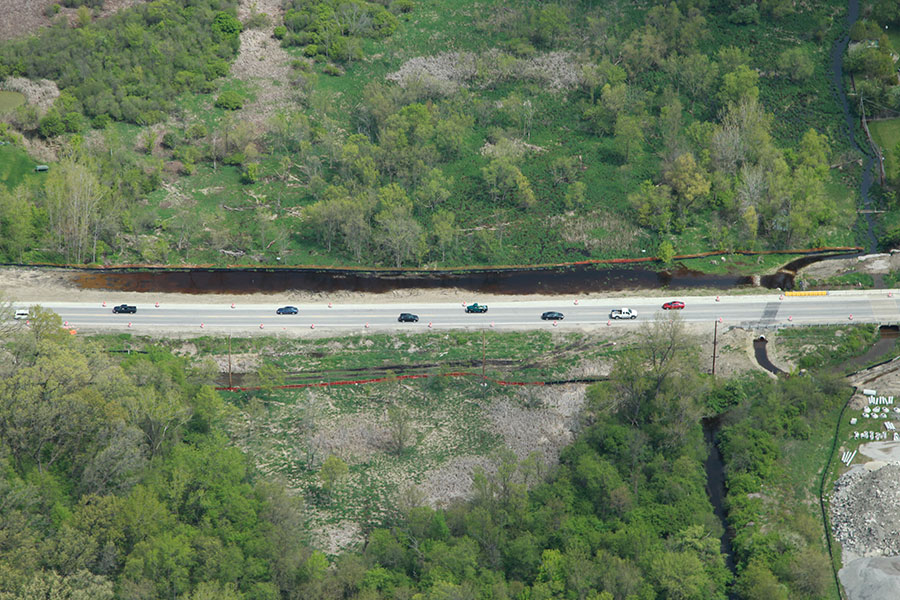
Civiltech is helping IDOT bring a long-awaited improvement to the south suburbs. We were selected to perform construction engineering for the US Route 6 (159th Street) Reconstruction from Will-Cook Road to just west of US Route 45 (LaGrange Road) in the Village of Orland Park. This improvement will upgrade the nearly three miles of the existing two-lane roadway into a full cross-section with two new concrete lanes in each direction and a landscaped median. The median will be wide enough to accommodate two left-turn lanes at each intersection. The widened roadway footprint will provide improved safety, capacity, and pedestrian / bicyclist facilities through the corridor. The entire width of the existing roadway actually fits within the width of the new median area.
There are a few unique challenges that have presented themselves on this large improvement. This area is notorious for poor soil conditions with deep pockets of peat. There is a five-foot diameter MWRD sewer trunk line 35 feet deep through the peat. The two creeks that cross the project will now pass through newly installed reinforced concrete box culverts. There are hefty cut / embankment areas to address the widening through the hilly section. Traffic signals are part of the three major intersection enhancements. A considerable amount of new drainage pipe and structures will be installed to accommodate the increased pavement size. The plans, of course, show how to build among these challenges, however, it is the unexpected issues that occur where our Phase III team truly has the opportunity to show how they can make it work. 
Dry land bridges are to be constructed to keep the new roadway stable on top of the deep peat. Over 90,000 feet of steel piles are to be driven as part of the bridge bents. The MWRD sewer is shown to be avoided by battering / slanting the piles to either side. The issue that came up was whether we have a very good location for the 35 feet deep sewer. A repair at that depth would be catastrophic should a pile puncture the sewer. Our team has been consistently communicating with the MWRD locators, project designers, and the contractor’s construction managers. As MWRD provides physical locates of their line, the information is surveyed, compiled, and shared. Solutions are then coordinated with the designers and the contractor that modify pile batter angles and locations as necessary to provide the needed bridge support while also protecting the utility. Keeping all parties updated for quick decisions and making certain they remain on task is not an easy accomplishment when working with agencies that have huge programs themselves.
The embankment areas have offered their own challenges as many of them are being placed on top of and next to the poor soils. Civiltech has worked very closely with IDOT’s Bureau of Materials, their soil engineers and the contractor’s earthwork crews to determine how to build stable embankments as they are constructed. Coordinating test pits with the contractor, stabilizing the subgrade and using settlement platforms have proven to be the best approach. We collect all the pertinent information. Then using our combined experience and sound engineering, we help formulate the recommendation for the most favorable resolution. A further complication is the poor soil outside the footprint of the new embankment. As the widened area is constructed higher with good material, the lateral load can push the new material out and into the poor soils. This would result in the settlement of the new road if not addressed. By working with all the groups involved, we are delivering remedies for the settlement concerns with informed ideas such as leaving some of the temporary sheet pile walls permanently in place to control the sideways movement.
The Village of Orland Park, along with its many businesses and residents, are pleased with the progress on the US 6 improvement. They have lived through a long reconstruction project on an adjacent corridor. We continue to work with the local businesses, residents, and agencies; and appreciate their patience and cooperation as the project proceeds. We will keep tackling the complex construction challenges as they arise, to help our client provide these much-needed corridor improvements.
